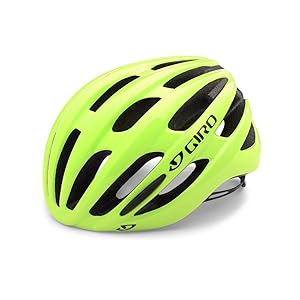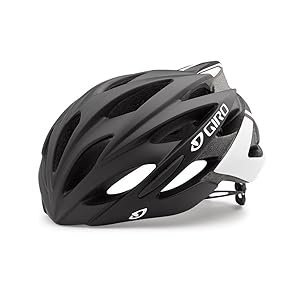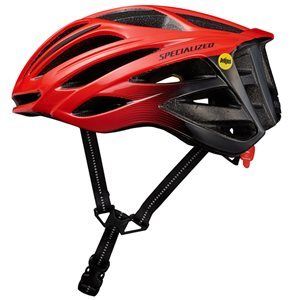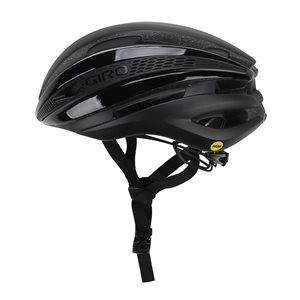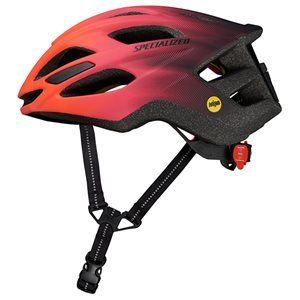The first thing you notice when looking at different road bike helmets is how bright they are. Color is a huge deal, but the most important parts of a good bike helmet are under the hood, so to speak.
We’re going to go beneath the outer shell to find out what you should look for in the perfect bicycle lid. Protection is paramount, but there are other things to think about too before you part with your cash. Find out everything you need to know right here before you get your new helmet.
The Best Road Bike Helmets
A simple search for the best road bicycle helmet is going to produce countless options for you to look through. Later, we’ll go into detail about the features you should look at – and which ones are more important than others. Here, though, we’ve highlighted our five favorite road bike helmets, each carefully chosen from dozens of options. You’ll soon see why these five made our list.
We’ve got ones here at several price points, featuring diverse designs and famous brands you can trust. Which of these brilliant helmets would suit you best? Here are our picks for the best road bike helmets available today to offer supreme protection at a reasonable cost.
1. Giro Foray Road Bike Helmet
Available in a rainbow of colors and three sizes (small, medium, and large), this well-fitting cycle helmet is a good choice if ventilation is important to you. Made from EPS impact foam, the helmet comes with no fewer than 21 vents, keeping you cool even on the warmest day.
It also comes with a Roc Loc 5 fit adjustment system, in common with many other Giro helmets. This allows you to use the dial to adjust the strap tension to achieve the most comfortable fit before you go. The stylish and practical polycarbonate shell completes the look.
2. Giro Savant Road Bike Helmet
Another popular helmet from the Giro brand, the Savant comes in six shades and three sizes for convenience. It also features 25 vents for great airflow whenever you’re out riding. Giro has incorporated its famous Roc Loc 5 fit system to help you achieve the perfect helmet adjustment and comfort right out of the box.
Great value meets great design and safety features in the Giro Savant helmet. Rely on the EPS liner coupled with an in-mould polycarbonate shell to ensure you look good and feel safer on every ride.
3. Specialized Echelon II Mips Road Bike Helmet
This eye-catching helmet is part of the Specialized range of cycling helmets. It uses MIPS technology (Multi-directional Impact Protection System) to give added protection against rotational impacts along with linear ones. Made from EPS foam, the helmet is available in small, medium, and large sizes to suit most riders.
It also has a 4th Dimension cooling system and decals that reflect light, making you easier to see on the road at night. While the lid doesn’t have ANGi technology attached to alert people in case of an accident, it is ready to receive it should you choose to add it later.
4. Giro Synthe Mips Road Bike Helmet
One of the pricier helmets from the Giro range, the Synthe justifies the higher price with its inclusion of modern MIPS technology. While regular helmets protect against only linear impacts, the Synthe protects against rotational impacts too.
The low friction layer included in the helmet provides added peace of mind. The design is suitable for both men and women and can even accommodate a ponytail thanks to the higher rear section. The Roc Loc Air adjustment system makes light work of getting the right fit too.
5. Specialized Chamonix Mips Road Bike Helmet
Another foray into the Specialized range, this Chamonix design is an affordable option for those who want a MIPS helmet without the high price tag. It comes in a small/medium or medium/large size, with added padding inside the helmet that can be removed or adjusted if required.
The familiar 4th Dimension cooling system is present here, and the design caters for the introduction of an ANGi Crash Sensor should you choose to add one at some point. You also benefit from the Tri-Fix fitting system to get the best finish and fit.
Guide To Road Bike Helmets

What makes the best road bike helmet? There are several elements to think about before you plonk down your cash for your new lid. Safety is the most important to think of, as this innocent-looking piece of kit must protect your head in the event you have an accident.
While most helmets should be rigorously tested and meet all current requirements, don’t take a chance – do your research and confirm their quality before purchase. It’s wise to pick a helmet that has passed all the tests in place in your country, so make sure you know the standards before you start shopping.
What does MIPS mean?
Before we move on to other aspects of bike helmets, we should highlight the term MIPS. This is something you’ll see as you shop for your new helmet. MIPS means Multi-directional Impact Protection System. You won’t find this technology in all helmets on the market, but there are real reasons why you should seriously consider it.
You might know that many helmets (particularly cheaper ones) are made from a thick EPS foam later covered by a shell. If you take a tumble and hit your head, the foam compresses to absorb the impact.
That sounds good enough, but the MIPS helmets work slightly differently. The main difference is the presence of two layers combats the rotational forces in play during some impacts to the head.
Since the helmets have two layers that work together, they can move in different ways in response to a rotational impact. Rotational means the object rotates rather than moving in linear fashion from point A to point B.
While regular helmets protect against the linear impacts, they don’t account for rotational forces. MIPS helmets do, providing further safety features that could make a difference if you were unfortunate enough to be in a serious accident. We soon learned (from some very casual research) that most serious head injuries are caused by rotational rather than linear impacts. Food for thought.
Now we’ve covered the most important feature of a bicycle helmet, let’s move on to the other elements you should consider.
How comfortable is it to wear?
Comfort is important. If your helmet isn’t comfy on your head, you’ll be tempted to keep reaching up to adjust it. That takes a hand off your handlebars, possibly your eyes off the road, and increases the chances of an accident. It’s also irritating, and if your helmet doesn’t stay put when you’re wearing it, it’s not going to stay put in a crash either.
Measure your head before purchase; many designs come in several sizes. Make sure the straps are adjustable too – no two riders are identical, even if they have the same head size. A certain amount of adjustment is also good in case you change your hairstyle (yes, it sounds weird, but it can make a difference).
Is it well ventilated?
Sweating isn’t a pleasant subject, but it’s something cyclists do. So, ventilation is key if you’re going to feel comfortable on your commute. It’s common to have several ventilation holes over the helmet, although the quantity you get depends on the helmet you choose.
Those holes serve more than one purpose, too. Not only do they allow for airflow, they also make the helmet lighter. Sure, lots of air holes are going to make for a colder head in the winter if you cycle all year round. However, you can always wear something thin underneath the keep the heat in if that’s the case.
How heavy is it?
Weight matters. Even the weight of something as small and seemingly insignificant as the saddle matters. Just take a look at the best road bike saddles today and you’ll notice they all compete to be the lightest.
Helmets are much the same. There is quite some variation between the lightest and the heaviest helmets on the market. We prefer a lighter one as the heavier helmets tend to feel heavier still once you’ve been cycling for a while.
Ideally, your cycle helmet should feel almost as if it isn’t there once you’re wearing it. Properly adjusted and sitting nicely with no movement, a good helmet shouldn’t feel heavy on the top of your head.
A heavier helmet is more likely to make your head sweat more too, even if it does have ventilation holes. Something else to be aware of.
Does it look good?
We left this bit until last because while it matters, it is the least important thing to think about before buying your new helmet. For our money, we think an eye-catching and visible design is a good idea, as it’s just another way to be seen. Several leading designs come in a range of colors too, so you can usually find the design you want in the color you’d like.
Of course, it’s not just about choosing your favorite color or combination of colors. Cycling helmets take on very different appearances, and some are more aerodynamic than others. If you’re merely cycling to and from work each day, the small differences between a great helmet and a pro helmet are not going to matter. However, the best-performing aerodynamic helmets could shave some time off your best performance if you take part in road racing or something similar.
Then again, if you can shave a few minutes off your commute… possibly something to think about after all.
Some helmets also feature nifty extras such as rear LED lights and detachable visors. If that appeals, you can look for those when shortlisting possibilities.
Getting the right balance of features and cost
Ah yes… cost. That’s something we haven’t covered yet. We’d advise you to work out a rough budget before you start shopping. Road bike crash helmets range from the exceptionally cheap to the hugely expensive. Obviously, quality should improve the more you spend. The MIPS helmets are usually pricier than ones that do not include this safety system, but you’re getting more protection for your money.
It’s also worth looking at a reliable and trusted brand – one that has been around for a while and is perhaps already familiar to you. If you are new to cycling, a spot of research will soon highlight the brands you should be aware of.
Our Conclusion
While most bike helmets look similar, we’ve seen that what’s under the lid is the most important element of all to consider. Protection matters way more than good looks, although today’s selection of road bike helmets makes it easier than ever before to achieve both aims.
Starting with your budget and buying the best helmet you can comfortable afford is a good bet. For our money, the MIPS protection system should be the most important thing to look for. It won’t protect against all impacts, but anything you can do to add more protection on your next ride must be a good thing, mustn’t it?

